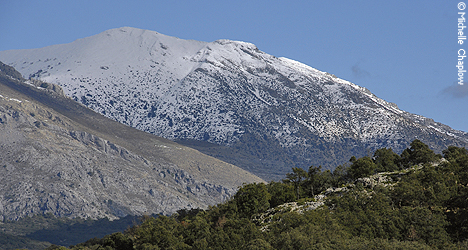The city of Malaga on the Mediterranean coast, in the Southern Spanish region of Andalucia, was the city you avoided. An industrial port encircled by a tired ring of Franco-era low-rise apartment buildings, it was always the city tourists dashed by on their way to Torremolinos or Marbella further down the Costa Del Sol.
Being out of favor from the 1970s onwards – when torrid overbuilding ruined the Spanish coast – has served Malaga well, and the tired city around the old port has gone through a revival in recent years: The pedestrian-only squares and streets are washed clean, filled with a mix of fashionable shops selling Ermenegildo Zegna suits and Omega watches, and old men hawking lotto tickets and blanched Andalucian almonds wrapped in paper cones—all in the shadow of the city’s baroque cathedral where the 17th century choir stalls are carved from mahogany and cedar.
The city is still no great beauty, but its unpretentious charm stems from the fact it remains a middle-class working port. The first night I arrived I dined on a plate ofpata negra (thinly-cut slices of cured ham, with a rich marble of fat, made from black pigs that feed on acorns) and some grilled sea bream served with French-cut beans. As I drank my copa de vino tinto, contentedly observing the town’s life from the sidewalk café, a guitar-banging gypsy dashed by, twitchy as a heroin addict, followed by an old man selling to local tapas bars the snails slowly crawling the walls of his white bucket.
Two newly-opened institutions have greatly contributed to Malaga’s cultural revival. The crowd-puller is the Picasso Museum, and I am sure it is a lovely collection, but, in all honesty, I couldn’t bear to see yet another second-tier Picasso Museum. (The Spanish painter, for all his greatness, would have benefitted considerably from being a little less prolific.)
My interest was, however, very much piqued by the new museum housing the collection of Baroness Carmen Thyssen-Bornemisza de Kaszon.
The Thyssen family, dating back to the 17th century, famously made their fortune supplying the industrializing German state with steel. But they were also great collectors of art, and the late Baron Hans Heinrich Thyssen-Bornemisza aggressively added works to his father’s stacks of Old Masters until the family’s 1,600-strong collection became the second largest private art collection in the world, second only to the British Royal Family Collection.
Ranging from Hans Holbein to Edward Hopper, the collection was originally housed in the family’s Villa Favorita in Lugano, Switzerland. (The Thyssen family left Germany for Switzerland in the 1930s.) In the mid 1980s, however, the Swiss unwisely barred the baron from expanding his museum at Villa Favorita—they were unimpressed he wanted to show more of his collection to the public.
Enter Spain. In 1985 the baron married his 5th wife, Carmen Cervera, a former Miss Cataluna, just as his battle with Swiss small-mindedness was heating up. The Catalan beauty was instrumental in getting her husband to move his art collection to more flexible Spain, where it now sits in its own museum next to the Prado in Madrid.
But Baroness Carmen Thyssen herself began collecting in the late 1980s, all under her husband’s tutelage, and she focused on Andalucian art of the mid-19th to early 20th century. It was this collection, critically praised throughout Spain when it was first exhibited in the late 1990s, which was squirreled away in the newly-converted palace called the Museo CarmenThyssen Málaga.
The mid-19th century Andalucian works in the collection were largely painted for middle-class European tourists of the day who wanted to return to London and Paris with reminders of their Andalucian holidays. So the first floor of the museum is devoted to these so-calledColumbrista painters, and provides a panoply of chocolate box scenes of idealized Andalucian landscape romanticism: sultry gypsy dancers and battling bandoleros in mountain caves and young fishermen wooing flower girls.
But as the 19th century progresses, so does the sophistication of the paintings. Two paintings in particular stayed with me long afterwards: the dark Columbrista painting of 1851 by the Frenchman, Alfred Dehodencq, painted for the duke occupying the Palace of San Telmo. It’s of a procession through the town during Holy Week. Hooded monks, like an all-black vision of the Ku Klux Klan, are the candle-carrying advance guard of the Mater Dolorosa, and they walk a gauntlet of rapturous women in black mantillas. Powerful stuff.
Later, in 1867, the Spaniard Mariàno Fortuny Marsal painted a bullfight with quick, almost impressionistic brushstrokes that seems to foreshadow what is yet to come in the art world. Called Exquisite Realism, or the Précieux Style, the intense brushstrokes of the “Bullfight” give a blurry sense of speed and movement at the breath-holding moment when a gored picador is carried dying from the ring and another picador is trying to weaken the bull with the hard thrust of his lance. It’s hard to tell who is going to live or die, and it’s a very modern work, in a 19th century way.



















